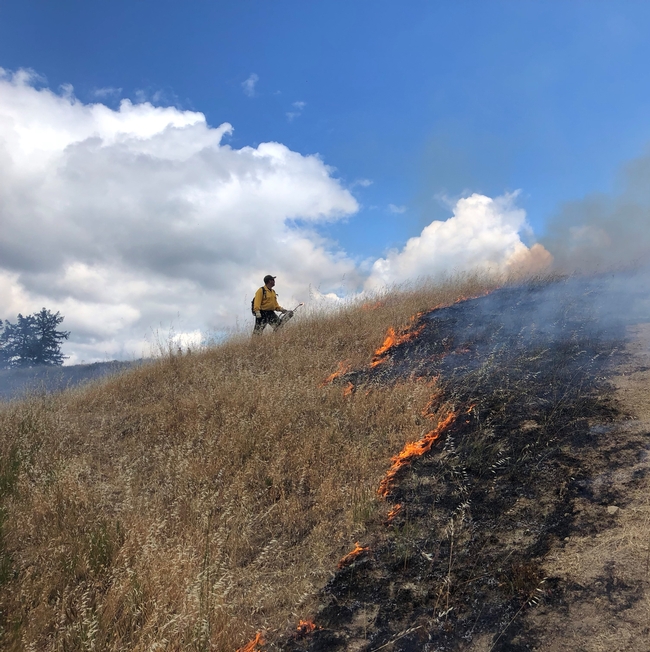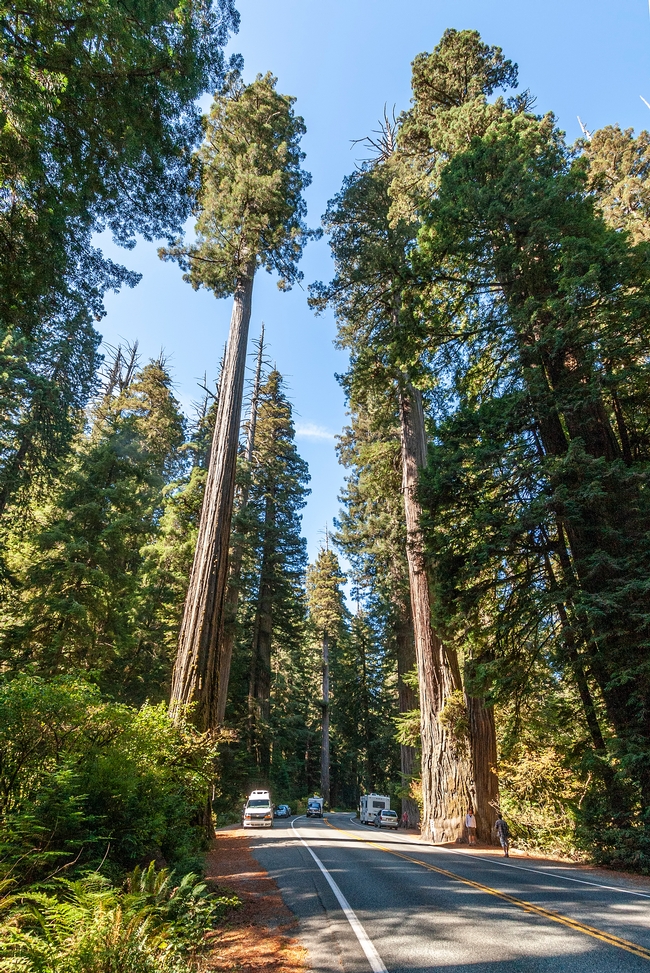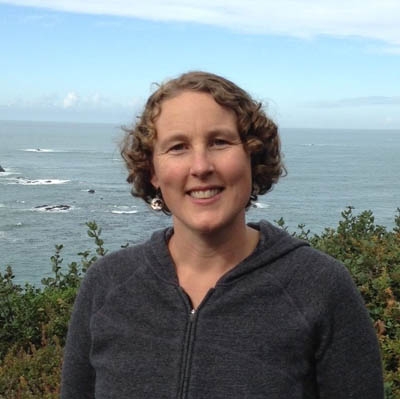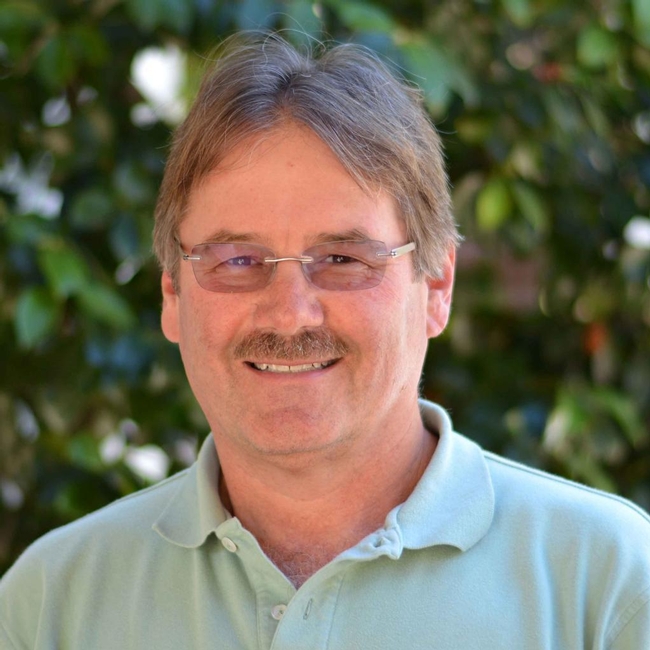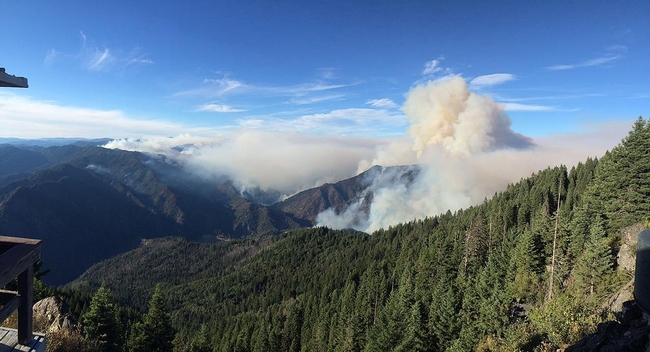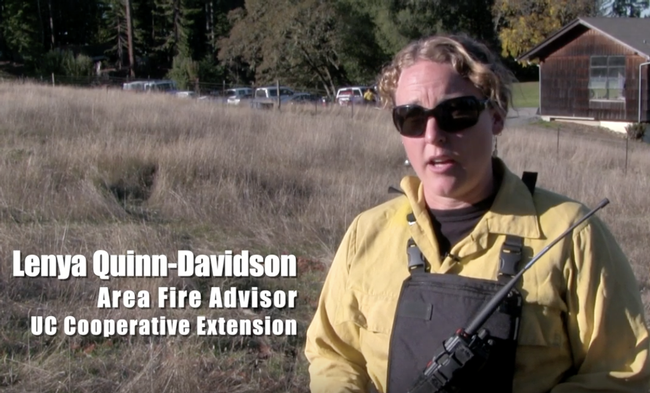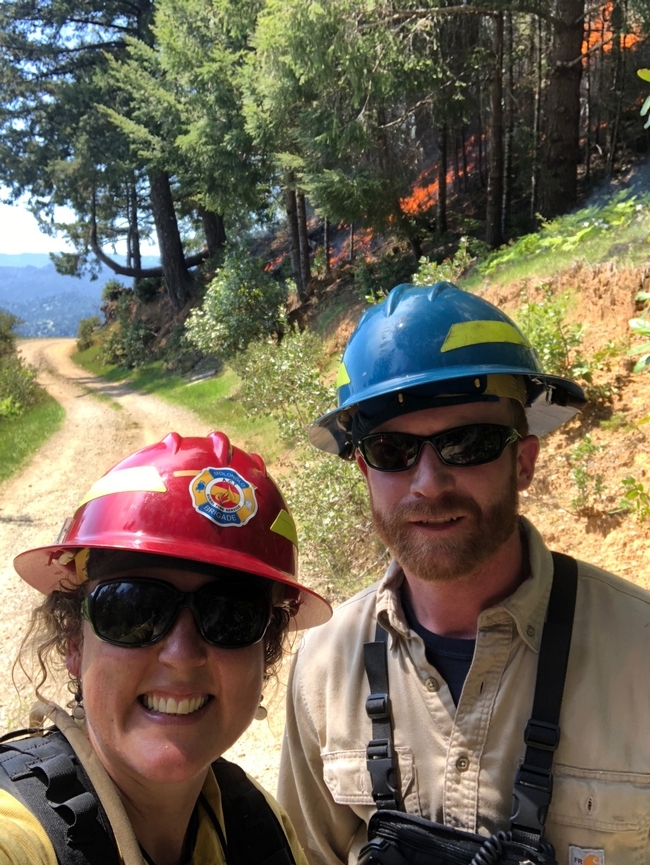Posts Tagged: Lenya Quinn-Davidson
First-ever California burn boss class meets in Eureka
New certification program will increase opportunities for prescribed fire across California
A group of 19 experienced prescribed burners are gathered in Eureka this week to become certified as prescribed fire burn bosses. The group is the first cohort to participate in the California State-Certified Burn Boss course, part of a certification program that was mandated by legislation in 2018, but was only recently finalized and approved. The course, hosted in Eureka by University of California Cooperative Extension, is a full week session and includes topics from laws, regulations, and permits to burn planning and smoke management.
"With each catastrophic wildfire season in California, the importance of prescribed fire becomes more clear," said Lenya Quinn-Davidson, University of California Cooperative Extension fire advisor, who is hosting the class in Eureka. "Prescribed fire is one of the most ecologically appropriate and cost-effective tools available, and provides innumerable benefits in California's fire-adapted landscapes. Prescribed burning is used to reduce fuels and wildfire risk, but also to restore habitat, control invasive species, improve rangelands, and promote cultural resources and values."
California is remarkably behind when it comes to implementing prescribed fire, she said. While states like Florida burn up to 2 million acres a year, California typically burns less than 100,000 acres statewide. It's clear that fire agencies can't meet the need for this work on their own — collaboration with local communities and leaders is essential.
The new program will certify prescribed fire practitioners who don't work for a fire management agency but are leading prescribed burning in their communities. This week's inaugural class in Eureka includes retired federally qualified burn bosses, tribal burn bosses, and leaders from state and local agencies and nonprofit organizations. Once certified by the state, these burn bosses will be able to share liability with CAL FIRE on prescribed burns.
“We've needed something like this in California for a long time, but never thought we'd see it happen. This is a historic moment for prescribed fire in California,” said Quinn-Davidson, who also leads the Northern California Prescribed Fire Council, and is currently being consulted for legislation that would break down even more barriers to prescribed fire.
In the last several years, more than a dozen community-based prescribed burn associations have developed throughout California. Many of these groups were inspired by the Humboldt County Prescribed Burn Association, which was the first of its kind in the western U.S. when it formed in 2018.
When these newly certified burn bosses leave Eureka, they will be able to go home and lift up efforts on their local landscapes, contributing to fire resilience across the state.
Forest management can help giant sequoias and coastal redwoods survive
In 2020, 9,000 fires scorched more than 4 million acres of California, a record-breaking year, reported Alejandra Borunda in National Geographic. Fires burned through homes and oak forests, grasslands and pines — and also through patches of giant sequoias and coast redwoods, respectively the most massive and the tallest trees on earth.
Giant sequoias are not the oldest living trees, but some have been growing in Sierra Nevada forests for more than 3,200 years. They are found in 68 groves on the Sierra's western flank. The state's redwood forests grow in a narrow strip along the coast of Northern California and Southern Oregon.
The 2020 fires burned through about 16,000 acres of sequoia groves, about a third of their total area. In redwood forests of the Santa Cruz Mountains, 40,000 acres burned.
But because redwoods are well-adapted to fire, they'll likely recover pretty quickly, said Scott Stephens, a UC Berkeley fire scientist. “In some ways, this fire could make redwoods more dominant in the landscape," he said, because other trees — like the hardwoods or Douglas firs that crowded the local forests — died outright in the burns.
However, scientists are concerned one cause of the fires, climate change, could have additional impacts on these natural treasures.
Since the mid-1800s, temperatures in the western U.S. have increased by 1.6 degrees Fahrenheit. Fog banks are fading in coast redwood territory, and snows are less consistent in the Sierras. The changes leave redwoods and sequoias without their preferred climate conditions.
The most responsible thing to do now, Stephens said, is to “take the opportunity that has been handed to us,” and make a plan to go back in and burn again—soon, within the next few years.
UC Cooperative Extension forestry advisor Lenya Quinn-Davidson agrees that California must manage fire to help the trees survive. Tree-ring records show that humans have influenced the fire regime for better and worse as long as they've been in these forests.
“The empowering message there is, human management can actually override the effects of climate in a fire contest,” Quinn-Davidson said. “It's not just a climate story. We can't just throw in the towel, feel overwhelmed, and tell ourselves these trees are done for. That's not true!”
North Coast forests are more dense and dry, fueling fires
Five of California's six largest fires have occurred in 2020, reported Julie Cart in CalMatters.
“There is a collective sensation that we are reaching a tipping point,” said Lenya Quinn-Davidson, a fire specialist with the University of California Cooperative Extension. “This year was not just the fluke burning horrifically. This is 3.2 million acres of fire that burned in a month.”
Quinn-Davidson is based in Humboldt County, with typically rainy, foggy redwood forests. However, she said, the forests don't resemble their former state.
"They are suffering from the same things that the rest of the state forests are. They are poorly managed and have fuels buildup," Quinn-Davidson said.
Redwood and pine forests are many times more dense than at any time in their history.
"We are now entering a new regime, the climate is changing and we are seeing drier conditions and we are seeing a longer fire season. We are not getting that fall precipitation," she said.
The state's 2018 Fourth Climate Assessment included dire predictions for the North Coast: “Future wildfire projections suggest a longer fire season, an increase in wildfire frequency, and an expansion of the area susceptible to fire.”
Average annual maximum temperatures in Mendocino, Humboldt, Del Norte, Lake, Trinity and Siskiyou Counties could increase by as much as 9 degrees through the end of the century, the report concluded.
“The weather and climate is impacting these areas. Last year we were at 60% of average precipitation. We're drier than normal,” said Scott Stephens, a fire scientist at UC Berkeley. “So when lighting strikes, you get an overwhelming number of ignitions in fuels that have been preconditioned to burn.”
The fog that reliably blankets the North Coast is dissipating. Research from UC Berkeley found that fog frequency has declined by a third compared with a century ago.
“Even here in Humboldt County — we are right on the ocean, basically in a rainforest — people are starting to look around and say, ‘Is my house ready for a wildfire?' I'm hearing those conversations,” Quinn-Davidson said.
UCCE experts provide scientific fire information to media
The raging fires sparked during August have raised the visibility of UC fire scientists, who provide critical information to state and national media. Below are a sampling of stories and comments offered by UC Cooperative Extension experts:
Forest management needed
“When we started suppressing fires 100 years ago all the time, we actually allowed a huge buildup of fuels and debris,” said UC Cooperative Extension forest advisor Susie Kocher, who is based in the Lake Tahoe region.
She is an advocate for requiring residents to clean up the extra fuel — grasses, trees, shrubs and clutter — around their homes, making them fire ready, and for more prescribed burns.
“There's a need for more frequent, low-severity fire across the landscape, so that we wouldn't have quite so much explosion in the burning in the fields that we have currently,” Kocher said.
In August, the state and federal government agreed to clean up 1 million acres by 2025, with practices such as prescribed burns. Part of that agreement also included a commitment to create a 20-year plan by next year to prioritize areas for forest-thinning. But even this plan is sliver of what's needed to protect California from devastating future wildfires.
“I think it's a good indication they're paying attention now and that we're moving in the right direction,” said Michael Jones a UC Cooperative Extension forestry advisor in Mendocino, Lake and Sonoma counties. “My hope is that once we start with a million, then it's really easy to scale up to multiple millions.”
Capitol Public Radio, Sept. 3, 2020Taking steps to reduce fire danger
“There are things that we can and should be doing to address the fire problem and fire risk in California, and to get ahead of it, and to make ourselves more resilient,” said Lenya Quinn-Davidson, a fire advisor with the University of California Cooperative Extension and director of the Northern California Prescribed Fire Council.
Quinn-Davidson said she was encouraged when California Gov. Gavin Newsom and U.S. Forest Service officials announced an agreement this month on a joint strategy to reduce wildfire risks.
“We need more coordination and more collaboration among all of the different groups who work on these issues,” Quinn-Davidson said. “The number one thing we need is more coordinated vision around what fire is going to look like in California, how people can live with fire.”
Arizona Central, Aug. 28, 2020
What's at stake
“Every part of California is receptive to wildfire,” said Yana Valachovic, a UC Cooperative Extension forestry advisor on the North Coast. “Especially in a year like this, when we had a pretty dry winter and spring, so a lot of the state is in drought conditions.”
Sacramento Bee, Aug. 27, 2020
Fires are getting worse
"They are certainly getting worse over time," said Susan Kocher, a forestry advisor at the University of California-Cooperative Extension Central Sierra. "We burned fewer acres in wildfires in 2019 than 2018, but overall, yes, the trend is progressing to burning more and more acres at high severity over time and affecting more people through evacuations and damages to homes and communities."
Yana Valachovic, a forest advisor and county director at University of California Cooperative Extension–Humboldt and Del Norte counties, said that 100 years of fire suppression is catching up to the state as well. Valachovic said before California was settled by white pioneers around the gold rush in the 1850s, Native Americans frequently used fire as a tool —for example, to clean out an infestation of bugs in acorns.
"Fire can be really important for stimulating biodiversity and creating more food sources," Valachovic said. "After years of suppressing those fires, now we get an ignition, whether human-caused or lightning-caused or power lines down, and you have an accumulation of materials that have accumulated over various time periods, but the quantity of fuel is substantially greater than it was historically."
Salon, Aug. 25
Firefighting priorities
“At the statewide level, we do get into this mode where we start wondering where the biggest loss is going to be, what's the highest priority, and that is where the resources are going to go,” said Lenya Quinn-Davidson, a fire specialist with the UC Cooperative Extension.
Los Angeles Times, Aug. 24, 2020
Take action
Q: Beyond widely accepted reasons for wildfires growing in size, severity, and frequency, why hasn't California made more progress in slowing the trend?
Lenya Quinn-Davidson: Our fire management and our land management haven't kept pace with the scientific understanding we have of fire in California. There's this fear of active land management – prescribed burning, thinning – that sometimes gets in the way of us making good choices. If we're not protecting the resources we care about and we're not taking action, then we will continue to lose them to big fires.
Bill Stewart: Many of the fires around the greater Bay Area are in areas that didn't burn 30 years ago because they were cattle ranches. They had cattle on them, and that helped reduce fuels. Now those areas have turned into parks or 5- and 10-acre residential lots. So much development has been about what's aesthetically pleasing, so we've ended up with a landscape that, during hot and dry seasons, there's a lot more fuel and it becomes a much riskier situation.
Q: The era of megafires in California has been decades in the making. How can public agencies begin to counter that over the next few years?
Quinn-Davidson: We need to create a more robust and sustainable fire workforce. Right now, they're so beat down at the end of fire season – especially as fire season is getting longer in California – that there's basically no capacity the rest of the year to do any of the proactive stuff we need to be doing. So we need to create more jobs, and those jobs need to be dedicated to fire management and land management.
Christian Science Monitor, Aug. 24, 2020
Historical fire suppression
“We have put out fires for 100 years. Now we are paying the price,” said Scott Stephens, a professor of fire science at UC Berkeley. “It will take a while to make these forests healthy again. But it's absolutely possible.”
Stephens, the UC fire scientist, estimates that before the Gold Rush, roughly 4.5 million acres a year in California burned. By the 1950s and 1960s, that was down to about 250,000 acres a year. In recent years, it has approached 2 million acres a year.
San Jose Mercury News, Aug 23, 2020
Limited firefighting resources
At the statewide level, we do get into this mode where we start wondering where the biggest loss is going to be, what's the highest priority, and that is where the resources are going to go,” said Lenya Quinn-Davidson, a fire expert with the University of California Cooperative Extension.
Los Angeles Times, Aug. 22, 2020
Smoke impact on fresh produce
According to a 2018 preliminary UC Cooperative Extension Sonoma study, smoke from 2017 fires had little impact on local Sonoma County produce.
Based on preliminary findings, "...produce safety was not significantly affected by the fires and may be mitigated by washing produce."
The Californian, August 21, 2020
Humboldt County’s Prescribed Burn Association teaches the value of fire
On a crisp and clear morning late last year, around 20 volunteer firefighters, landowners and community members gathered on a plot of land outside of the small rural community of Kneeland in Humboldt County. They listened intently to detailed instructions on how to safely burn 20 acres of private property that gradually rises on a hill before them. The volunteers gathered to learn how to successfully undertake a prescribed burn. It was all part of the ongoing education and training being conducted by Humboldt County's Prescribed Burn Association – the first of its kind west of the Rockies.
Lenya Quinn-Davidson and Jeffery Stackhouse, who both work for the UC Cooperative Extension in Humboldt County, developed the program in 2017 and have seen it steadily grow ever since. The association is comprised of landowners, nonprofits, volunteer firefighters and other community members who work together to carry out prescribed burns on private land. Until the association was created, most landowners and community members had lacked access to prescribed burn information and training.
“Fire is a natural part of California's landscape. Prescribed fire is a way for us to bring fire back to the landscape as a natural process under controlled conditions. We can choose the weather, we can choose how it's going to burn,” says Quinn-Davidson. “Private landowners have largely been left out of the fire picture and we realize that is a big part of the problem.”
The goal of the prescribed burn on that October day was to eliminate an invasive type of tree that was overtaking the grassy hill and restore the land to a state where native oaks can thrive once again. The property owners are receiving the same training as the volunteer firefighters on hand. Beyond eliminating invasive species, the association is utilizing prescribed burns to reduce fuels to prevent future wildfires, as well as restore wildlife habitat. But most importantly, the training and education empowers landowners and others to reconnect with fire as a management tool.
Will Emerson is an assistant fire chief for the volunteer Bell Springs Fire Department in northern Mendocino County. He and his three colleagues made the 2.5-hour trip to participate in the prescribed burn training session in Humboldt County. He sees the trainings as a “really great experience” for volunteer fire departments, some of which have new trainees who have never worked a fire before.
“It's excellent training for them — just to get comfortable working with fire,” Emerson says.
The concept of a prescribed burn association is catching on. Quinn-Davidson and Stackhouse have presented the Humboldt County model to numerous counties around the state, and new associations are cropping up around California.
“We use our program to train people, to inspire people, to empower people,” Quinn-Davidson says.
The value of Humboldt County's Prescribed Burn Association goes beyond the training it provides. Quinn-Davidson and Stackhouse view the association as a “community cooperative,” bringing together groups that have traditionally been at odds. At any training session you may find volunteers from the ranching or timber industry, environmentalists or cannabis growers.
“Instead of being on opposite sides of an issue, people are gaining understanding for the other side,” Stackhouse says. “It has opened the door for real, honest communication between different groups that otherwise would not be happening. Having people work together who have been on different sides of the community really is amazing.”
Quinn-Davidson agrees. “We are building community and we are using fire as this positive, synergistic thing,” she concludes. “And I feel so positive about it.”
The CSAC Challenge Awards were created in the early 1990s to recognize county innovation and best practices. Humboldt County's Prescribed Burn Association is a recipient of a 2019 CSAC Challenge Award – one of only 18 Challenge Awards presented statewide out of 284 entries.
To view a video of this program on YouTube, click here.


